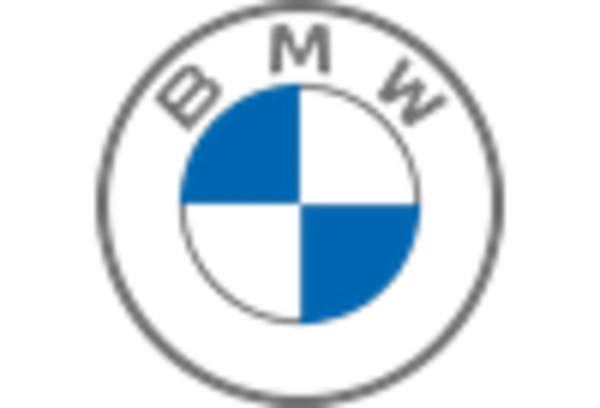Rising Fuel Prices and Economic Factors
The Long Range Electric Vehicle Market is also being driven by the rising costs of traditional fuels. As fuel prices continue to fluctuate, consumers are increasingly looking for cost-effective alternatives. Electric vehicles offer lower operating costs, with electricity generally being cheaper than gasoline or diesel. Recent analyses suggest that owning an electric vehicle can save consumers thousands of dollars over its lifetime compared to conventional vehicles. This economic incentive is particularly appealing in regions where fuel prices are high. Additionally, as battery technology improves, the initial purchase price of long-range electric vehicles is expected to decrease, making them more accessible to a broader audience. Thus, the Long Range Electric Vehicle Market stands to benefit from these economic trends, as more consumers seek to mitigate their fuel expenses.
Environmental Concerns and Sustainability
The Long Range Electric Vehicle Market is significantly influenced by the growing awareness of environmental issues. As climate change becomes an increasingly pressing concern, consumers are more inclined to seek sustainable transportation options. Electric vehicles, particularly long-range models, are perceived as a viable solution to reduce carbon emissions. Data indicates that electric vehicles can reduce greenhouse gas emissions by up to 50 percent compared to traditional gasoline vehicles. This shift in consumer mindset is prompting manufacturers to invest in eco-friendly technologies and sustainable practices. Consequently, the Long Range Electric Vehicle Market is poised for growth as more individuals prioritize sustainability in their purchasing decisions, aligning with global efforts to combat climate change.
Increased Investment in Electric Vehicle Technology
Investment in electric vehicle technology is a critical driver for the Long Range Electric Vehicle Market. Major automotive manufacturers and tech companies are allocating substantial resources to research and development, aiming to enhance battery efficiency, vehicle performance, and overall user experience. Recent reports indicate that investments in electric vehicle technology have surged, with billions of dollars being funneled into innovative projects. This influx of capital is likely to accelerate the development of long-range electric vehicles, making them more competitive with traditional vehicles. Furthermore, partnerships between automotive companies and technology firms are fostering innovation, leading to breakthroughs that could redefine the Long Range Electric Vehicle Market. As these advancements materialize, consumer interest is expected to grow, further propelling market expansion.
Shifts in Consumer Preferences and Lifestyle Changes
The Long Range Electric Vehicle Market is witnessing shifts in consumer preferences, driven by changing lifestyles and values. Younger generations, in particular, are more inclined to embrace electric vehicles as part of their commitment to sustainability and modern living. This demographic is increasingly prioritizing technology, connectivity, and eco-friendliness in their purchasing decisions. Data suggests that nearly 60 percent of millennials express a preference for electric vehicles over traditional cars. As urbanization continues to rise, the demand for long-range electric vehicles that can accommodate daily commuting needs while offering environmental benefits is likely to increase. Consequently, the Long Range Electric Vehicle Market is adapting to these evolving consumer expectations, which may lead to the introduction of more tailored products and services.
Technological Innovations in Charging Infrastructure
The Long Range Electric Vehicle Market is experiencing a notable transformation due to advancements in charging infrastructure. Enhanced charging technologies, such as ultra-fast chargers, are being deployed, significantly reducing charging times. This development is crucial as it addresses one of the primary concerns of potential electric vehicle buyers: range anxiety. According to recent data, the number of public charging stations has increased by over 30 percent in the last year, facilitating easier access for consumers. Furthermore, the integration of smart charging solutions allows for more efficient energy use, potentially lowering costs for consumers. As charging networks expand and improve, the Long Range Electric Vehicle Market is likely to see a surge in adoption rates, as consumers feel more confident in the availability of charging options.

















Leave a Comment